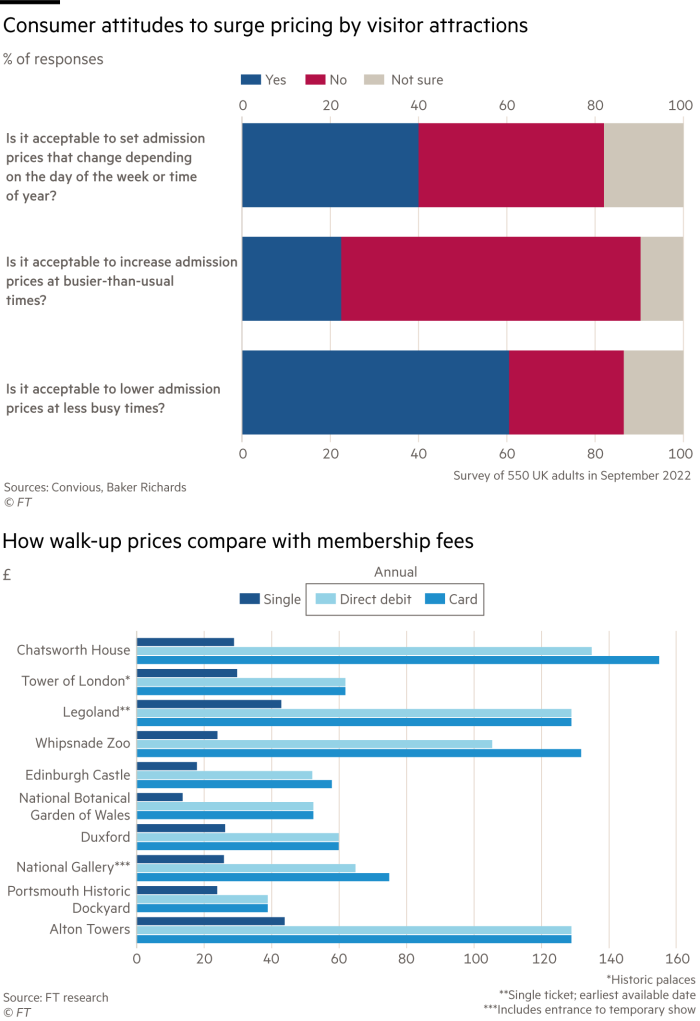UK and US school breaks in February could spring some nasty surprises on families seeking fun days out. Visitor attractions are coping with a double financial blow: damage inflicted by lockdowns and soaring input costs. As a result, they have been raising gate prices steeply. They have also been tweaking pricing formulas to nudge visitors into spending more long term.
High and low season pricing is nothing new. What may alarm cash-strapped parents more is the advent of dynamic or “surge” pricing at visitor attractions. The model, which aims to equilibrate price with demand has worked for Uber in ride-hailing and Premier Inn for UK budget hotel stays. Indianapolis Zoo adopted dynamic pricing in 2014.
Digonex, which produces pricing algorithms for entertainment and attractions companies, says dynamic pricing can increase affordability while lifting revenues by up to a fifth in the first year.
It can also enrage customers. Over two-thirds of visitor attraction customers object to price hikes at busy times, according to one poll. Fans of Bruce Springsteen were furious when charged steeply for tickets by Ticketmaster, a brand of US-listed Live Nation.
Another strategy is to raise gate prices and reduce annual membership fees. The latter will still be higher, typically by three to five times. Some attractions also try to nudge customers into paying for membership by direct debit rather than as a one-off. A proportion of subscribers will then renew automatically through inertia.
Membership conditions can be controversial. Disney upset passholders by blocking access on popular days. They tended to be locals who did not spend much at Disney hotels and restaurants.

Visitor attraction pricing may sometimes feel exploitative, particularly for parents on limited budgets. But attractions have to avoid being scalped themselves, too. Few unsubsidised venues would risk the experiment in pay-what-you-can attempted by the Battersea Arts Centre. Tickets start at £6 but visitors can pay less by arrangement.
Pay-as-you-stay is another approach. The Weserburg Museum für moderne Kunst in Bremen tried this out, charging visitors for how much time they spent in the museum.
Attractions need to understand one simple truth when experimenting with pricing. The trade-off is not simply between price and volume. It involves goodwill too. Overcharging at peak times may generate a few bonanzas — at the cost of lower recurring revenues.
The Lex team is interested in hearing more from readers. Please tell us what you think of visitor attraction pricing in the comments section below.




